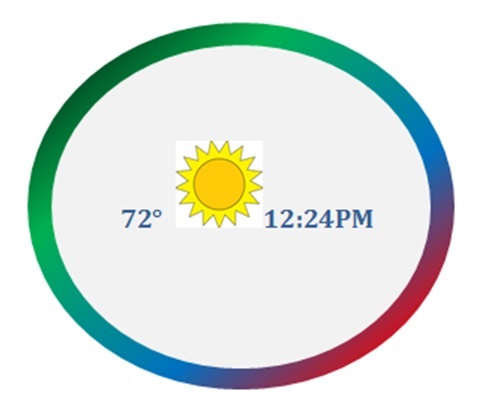Are you connected? If you are reading this blog, absolutely! You are connected to the Internet through your home computer, tablet, smartphone, car, library or coffee shop. And the list seems to grow every day. Other devices to add to the “connected” list include thermostats, smoke alarms, interior lighting and home appliances. On many newly connected devices, what used to be just a monochrome display temperature or a control function now has colors and is more interactive.
To enable a more vibrant display for Internet-connected devices, semiconductor companies, such as Texas Instruments, offer a portfolio of light-emitting diode (LED) drivers with the intelligence of a microcontroller in the sense that it can store and autonomously control the light output from LEDs connected to it.
One such LED driver is the LP55231, a device that has nine current sources and three independent program engines to control the nine LEDs connected to it. This setup allows for a lot of flexibility in controlling RGB color balance, while displaying a repetitive blinking sequence. Each LED can be programmed to have constant currents between 0 and 25.5mA.
Figure 1: The LP55231’s current control allows for controlling current through the different RGBs1
The flexibility in current control allows for controlling current through the different RGBs (in a light ring, for instance). This feature can produce lighting effects in your connected device that make them more interactive and eye-catching.
Figure 2: Colored light ring2
Smart-home appliances may include a liquid crystal diode (LCD) screen and a few LEDs for feedback in the devices. The LP55231 can handle the LED brightness control for the LCD panel and blinking sequences without the need for an external microcontroller or processor to deliver the sequencing and lighting effects. The LP55231 saves system power when its automatic power-save mode is enabled, while almost all analog blocks are powered down in power-save mode if you use an external clock signal.
When designing displays for your next Internet connected home application, don’t miss out on a way to make the display brighter. Consider TI’s advanced LED portfolio.
Additional resources:
- For more portfolio information, see http://www.ti.com/lsds/ti/power-management/indicator-rgbw-overview.page.
- For examples in programming TI devices, see this app note.
To learn more about how TI helps create a smarter city, check out these other Smart Cities blog posts
- What is the IQ of your home or building? Is it indeed smart?
- PMICs – The smart, high-efficiency power solution for smart home applications
- NFC/RFID for access control: Sniffing for cards
- Making smart energy smarter with renewable power storage
- Why time synchronization is essential (Part 1)
Diagram References
- 1 Source: LP55231 datasheet
- 2 Source: John Woodward, product marketing manager, Texas Instruments
To read more posts related to Smart Home/Buildings, check out the blogs below:
- What is the IQ of your home or building? Is it indeed smart? on Industrial Strength
- Smart connected home with renewable power storage on Power House
- NFC/RFID for access control: Sniffing for cards on ConnecTIng Wirelessly
- PMICs – The smart, high-efficiency power solution for smart home applications on Fully Charged
- Why time synchronization is essential (Part 1) on On the Grid
- Smart meters provide foundation for smart cities on The Official MSP430 Blog
Click here for more on how TI helps create a smarter city!



